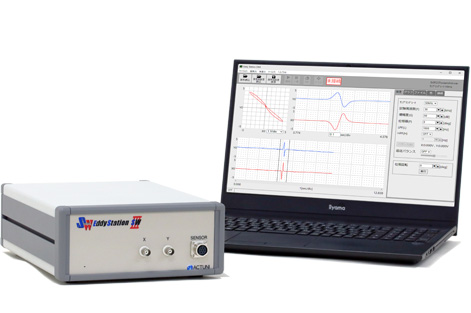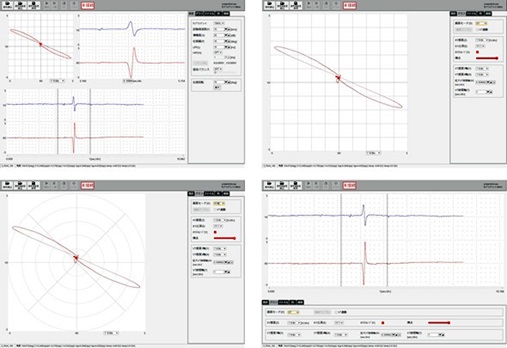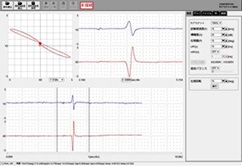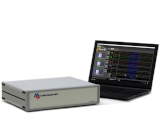- NDI division TOP
- Maintenance Inspection
EddyStation SWIII - Windows-Based Eddy Current Flaw Detector

Windows-Based Eddy Current Flaw Detector
The EddyStation SWIII is a single-frequency eddy current flaw
detector that works with Windows operating systems. To perform
eddy current flaw detection, simply connect the detector to a
PC via a LAN cable and start its dedicated software. The
acquired images and data can be used in other applications as
well.
A battery-powered type is also available as an option, which
can be used at sites where there is no power source.

Main Features
- Versatile with a laptop
-
Designed as a Windows-based detector, the EddyStation SWIII
is controlled with a mouse and keyboard. Additionally, after
inspection, phase angle and amplitude values can be
displayed, allowing waveforms and setting conditions to be
handled in other applications. The detector is particularly
useful in creating inspection reports.
It includes a storage feature that can display waveforms as smoothly as on a CRT.
It is equipped with analog outputs (BNC connectors) that provide output to a chart recorder.
Its dedicated software is compatible with Windows 10.
You can choose between AC power type (standard) and battery powered type (optional).
- High-speed sampling
- The EddyStation SWIII offers the capability to plot waveforms at high speeds of up to 50 kHz (50,000 points per second). The detector keeps track of all waveform peaks, even in high-speed inspection.
- A variety of waveform display modes help create reports
-

Once flaw detection results are obtained and stored on a USB flash drive, the operator can plug it into a Windows PC and use our dedicated software to view the results and create data for reports.
Four types of waveform views are available: XY, XY polar coordinate, VT, and VT+XY views.
- Quick and simple waveform analysis
-

Using two cursors, the operator can instantly display the values of the x- and y-axis amplitude voltages, vector peak voltage, and phase angle of the desired waveform. This feature is also useful in analysis situations.
You can also use the phase rotation function to change the phase of recorded waveform data.
Download the latest Adobe Acrobat Reader from https://www.adobe.com/.
Specifications
| Inspection Method | Electromagnetic induction method |
|---|---|
| Probe Type | Self-induction or mutual-induction |
| Method of Excitation | Single frequency electromagnetic inductance method; self induction; differential or absolute method |
| Test Frequency | 500 Hz - 2 MHz(two significant figures) |
| Sensitivity | 0.0 dB - 80.0 dB(0.1 dB steps) |
| Phase | 0.0 deg - 359.5 deg(0.5 deg steps) |
| Bridge Balance | Electronic automatic balance(manual balance or follow-up balance) |
| L.P.F. | 50 Hz - 2500 Hz、24 dB/Oct(two significant figures) |
| H.P.F. | OFF, or 1 Hz - 500 Hz(1 Hz steps); 24 dB/Oct or 12 dB/Oct (selectable) |
| Sampling frequency | 0.1、0.2、0.5、1、2、5、10、20、50 kHz |
| Storage | Available to storage media which are supported by operating system. |
| Printer | Available to printers whitch are supported by operating system. |
| Operating System | Windows 10 or later |
| Recommended PC System | intel Core™ i5 or higher |
| Interface | LAN |
| Analog Outputs | BNC connectors; X and Y signal; ±10 V |
| Display | Laptop PC |
| Environmental | Temperature range: 5 ℃ - 40 ℃, Humidity: 10 % - 85 % (without condensation) |
| Dimensions | H: 210 mm W: 88 mm D: 280 mm (not including rubber legs and connecters.) |
| Weight | Approximately 3.2 kg (not including cables) |
| Power |
AC 100 - 240 V ±10 %, 50 / 60 Hz、30 VA Battery :DC12 V, 2A (option) |
| Power Consumption | Approximately 30 VA |
| Accessories | AC power cable, Plug (7pins) for probe, BNC-BNC cable, LAN cable, Laptop PC |




